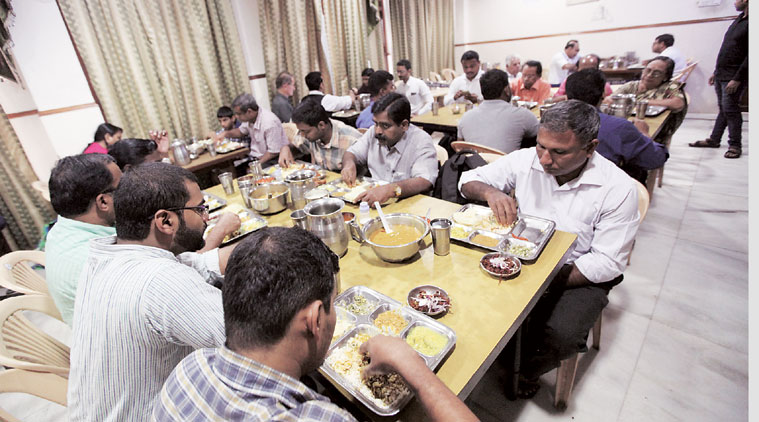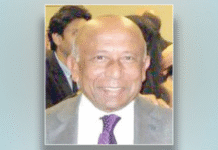Gulf migration and emergence of the remittance economy played a role, as did the absence in Kerala of movements like Arya Samaj
Written by Amrith Lal
Beef is a secular dish in Kerala. Much of Kerala’s population, cutting across class, caste and religion, consumes it. Any attempt to restrict its consumption, hence, triggers a sharp reaction from Malayalis. This explains the rare unanimity among Kerala’s politicians while protesting the police raid at the Kerala House canteen in New Delhi this week over rumours that its kitchen served beef.
But there is more than just the palate that has united Malayalis against the current attempt by the Sangh Parivar to force the dish off the menu. The beef ban demand is seen as an attempt to curtail the people’s right to choice of food, proxy intimidation against the religious minorities, and imposition of a food politics alien to Malayalis. Recognising that beef could trigger a backlash against the party, state leaders of the BJP have clarified that they do not advocate a ban on its consumption in Kerala.
Kerala’s love affair with beef, especially its secularisation, is a relatively recent phenomenon, and reflects the dramatic social changes that the state has seen over the past few decades. Until the 20th century, the idea of common dining did not exist in Kerala. There was no standard cuisine, but distinct menus shaped by caste, community and regional food preferences. The signature meat preparations were the monopoly of the Christians and Muslims, who together constitute over 40 per cent of the state’s population. Communities almost never inter-dined, and various social taboos regulated the compartmentalisation. When caste reform movements emerged in the 20th century, inter-dining became an important part of the radical agenda. But the fare remained vegetarian. Hanu G Das, who has researched the evolution of Kerala’s food culture, says while Dalits were a part of the inter-dining events, their food was kept out. He argues that the Kerala caste reformation project de facto valorised vegetarianism and excluded subaltern food (which included meat, especially beef).
The Gulf migration that started in the 1960s transformed Kerala’s economy and triggered a new shift in the food story as well. With the emergence of the remittance economy, incomes started rising and consumption picked up. As people travelled, they were forced to accommodate food differences. The emigrating Malayali discovered Arab cuisines while working in West Asia. Back in Kerala, vegetarian hotels were forced to yield space to non-vegetarian fast food outlets. The new cuisine economy was secular in taste and welcomed dishes, especially made of meat.
The popularisation of beef had, in fact, started even earlier — with the Christian families that migrated from central Kerala to the Malabar region. Food traditions of Malabar were more accommodating of meat dishes. However, the standard Kerala cuisine was considered to be the vegetarian sadya (feast) of upper caste Hindus. Beef — and porotta — has changed the narrative. Call it the de-Hinduisation of Kerala cuisine, but the Malayali menu has became richer for it.
The rise in the popularity of beef dishes may also have a political reason. Embracing a multi-religious cuisine, especially for upper caste Hindus, was deemed essential to shedding caste and communal prejudices. Having beef was a political act as well. The process was helped by the expansion of the leisure economy and the boom in the restaurant business from the 1980s. The emergence of a new street food culture, which expanded the menu beyond snacks like vada and banana fritters to omlettes and beef fry, opened up new eating options for the youth, who were arriving in the towns and cities to study.
The beef-ification of the Malayali diet faced limited political opposition. Cattle rearing was largely limited to elite rural households, whereas goats were the preferred livestock in the poorer homes. Cows were central to the agricultural economy, but farming as an economic activity had started to decline after the 1970s. Religious movements like the Arya Samaj that had turned the cow into a metaphor of Hindu political identity in northern India beginning with the 19th century, were not influential in Kerala. Attempts to work out a cow politics in connection with Janmashtami celebrations organised by Parivar outfits have been largely ignored.
As the fascination for beef grew, the Malayali turned it into a favourite side dish that went with even the mainstays of the vegetarian menu, including dosa, idly, puttu and idiyappam. It helped that beef was cheaper than mutton. Popular culture, especially cinema, helped in branding beef as an object of desire.
Today, porotta-beef is deemed the signature dish of Kerala. Perhaps it is inevitable that a preparation influenced by West Asian cuisine, in tandem with a predominantly subaltern meat, has become the Malayali’s favourite food.
Source: IndiaExpress










